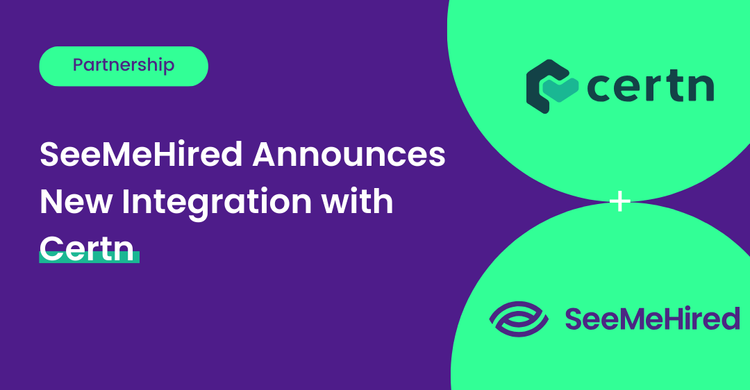HR Tech
What is an Applicant Tracking System (ATS) and Do You Need One?
If you're in HR, you probably have a lot on your mind.
Email, spreadsheets, calendars, phones, work boards, social media, workforce planning, candidate testing, video interviewing - the list of tools, tasks, and problems may seem endless.
This is where an Applicant Tracking System (ATS) can help.
In this article, we're going to look at what an ATS actually does and explain the main reasons to use one.
By the time you finish reading, you should have a good understanding of this type of software and whether it's a good choice for your HR process.
Ready? Let's go.
If you're hiring for multiple roles and receiving many applications, things can get overwhelming quickly. Download this applicant tracking system template to stay organised and keep all relevant information in one place.
What is an Applicant Tracking System (ATS)?
An applicant tracking system (ATS) allows you to source candidates, shortlist the best ones, and organise the overall hiring process in one place.
It's usually cloud-based software so it doesn't require an installation - everything is available online.
Among some of the key features for a standard ATS include drag and drop pipelines, daily recruitment processing, skill bank, compliance tools, and activity management.
Other features that distinguish an ATS include:
- Integration with multiple job boards so you get more applicants without manually listing on each one.
- The ability to score and rank candidates for easier shortlisting.
- Interview scheduling and in some cases video conferencing.
- Send messages and stay in touch with candidates to improve their experience.
Applicant Tracking System Example
As an example, you can check out SeeMeHired which is a UK-based ATS focused on small and mid-sized employers (up to 500 people).
With SeeMeHired, you can source more candidates using agency partners, job boards, and an integration with your own Careers page.
The SeeMeHired jobs view shows you all of your vacancies in one place.
In addition, you can screen CVs in a standard format so you can easily compare and rank candidates in line with regulations around GDPR and Diversity & Inclusion.
The software then allows you to contact and conduct a video interview with your top candidates, keeping all important data in one place.
You can also track and manage your upcoming interviews.
Lastly, SeeMeHired provides you with detailed reports and insights about your top sources of candidates and other key metrics.
This is just one example of an ATS built specifically to improve the hiring process in SMBs.
Check out our comparison of the best applicant tracking systems here.
How an ATS Could Streamline Your HR Process
Now that you know what the software entails, should you integrate it into your HR process? Here are several reasons why you should consider using an ATS:
Improve the candidate experience
The leading cause of a negative candidate experience is a lack of response from employers. Statistics reveal that an overwhelming 81% of candidates believe that employers' communication and regular updates significantly boost their overall candidate experience.
An ATS lets you send automatic updates to candidates as they progress through an application to keep them engaged. This means you don’t have to manually call or email candidates to inform them about the status of their application.
In addition, an ATS enables to you create a solid hiring framework so your candidates are always aware of next steps and what they need to do.
This not only improves the candidate experience but it also makes it easier and more efficient to do your own work.
Shortlist candidates easier and faster
One of the best things about an ATS is that it can minimise your workload by thinning out the applicant pool with defined minimum qualifications, years of experience, personality, and cognitive tests that gauge relevant skills.
An applicant tracking system will also help you coordinate your entire hiring process and bring all of your recruiting activities and resources together. It ensures you won't have to go back and forth between various frameworks and tools to complete your tasks.
This means you'll be able to reach, monitor, and manage all of your candidates' progress from a single location. As a result, your recruiting process will become more structured and streamlined.
Reduce mistakes
Given that a single job receives an average of 250 applications, you will agree with me that information can fall through the cracks. This is even more pronounced when you rely on email and spreadsheets alone to manage your hiring process.
An applicant tracking system automates sourcing and initial screening of candidates so mistakes are less likely to occur.
For example, candidates that don’t meet the minimum requirements are automatically rejected and notified using pre-set rules, reducing the chances of human error.
Ensure compliance
An ATS ensures compliance by providing a customisable hiring framework. This means you can set your own hiring checklists and rules to make sure you and your team go through the correct process every time.
This includes general regulations about staffing but also new rules around things like GPDR or Diversity and Inclusion.
For example, an ATS reduces the risk of hiring bias by keeping applicant personal details hidden. This allows for a level playing ground and evaluating candidates solely based on their skills and experience.
Do You Need an ATS?
Any organisation, regardless of size, that wants to prioritise hiring, should consider using an ATS. Here are four indicators that you're ready to integrate this system into your recruitment process.
- When candidates give feedback that your application process is confusing.
- When you lose too much time looking for files and data related to hiring.
- When your hiring process is slow, losing good candidates and increasing your costs.
- When you and your team feel overwhelmed by communication and never-ending tasks.
Final Thoughts
If you’re serious about finding and hiring great talent, you should consider investing in an ATS. It’s often one of the best things you can do to streamline your whole HR process - both internally and from the candidates’ perspective.
If you're ready to learn more and want to explore using an ATS, you can schedule a free demonstration with the SeeMeHired team here.














